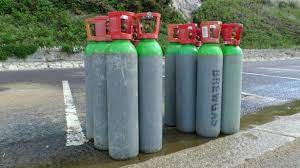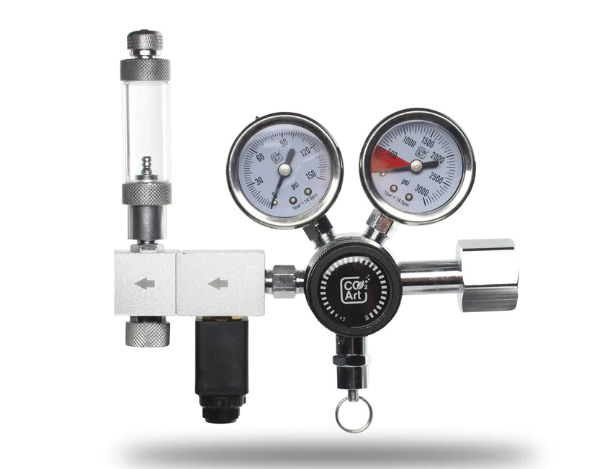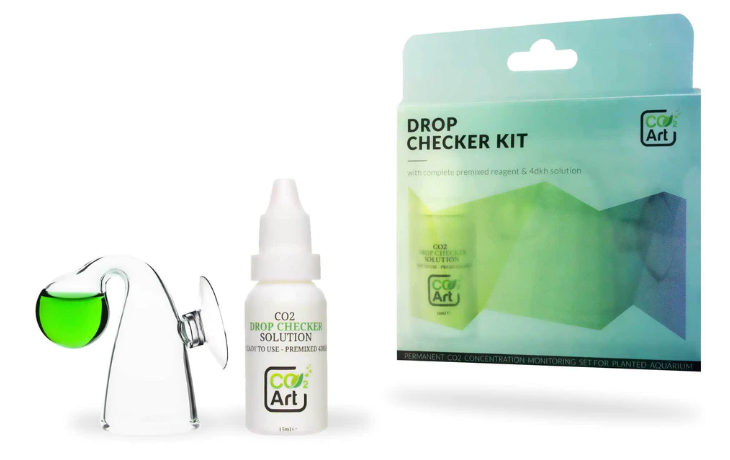How to Regulate CO2 in the Aquarium?
The ability and the knowledge to control whatever is put in your planted tanks is the most important aspect of this hobby.

Light when not regulated properly will cause a ton of problems. Flow when too strong or too weak will do the same thing. Too much or too little nutrients are equally detrimental. Carbon dioxide when not regulated properly will have disastrous effects in a planted aquarium. Admittedly there are some aspects in the hobby which are out of the hobbyist’s hands but with the case of Carbon dioxide it is absolutely vital that the hobbyist have absolute control specially when it comes to pressurised canisters. High levels of Carbon dioxide in your aquarium water column can kill fish and other fauna quicker than ammonia so it is better to apply this gas with proper caution.
Before discussing control though, let us first understand the sources of the Carbon dioxide gas supply. There are 3 popular methods of Carbon dioxide injection in the tanks. All three can be very efficient when used and regulated properly.
Biological CO2

The simplest method is the yeast and sugar Carbon dioxide generator. It is a D.I.Y. method which basically activates yeast in a bottle of sugar and water. Sugar becomes food for the yeast and as a bi-product, yeast produces Carbon dioxide and alcohol. Alcohol mixes with the water and Carbon dioxide is released into the bottle and into the planted tank. This D.I.Y. method should continue to produce Carbon dioxide within 1 to 3 weeks depending on the sugar mixture. The Carbon dioxide gas production is completely biological. There is no stopping the Carbon dioxide gas from escaping into the planted aquarium. The hobbyist has no control over it once the Carbon dioxide gas is being injected and it will be injected 24/7. This will only stop once the alcohol by product becomes too much for the yeast to tolerate and the yeast dies which will be in about a 1- 3 weeks.
How do we regulate this type of set up?
The answer is; We do not. The only means of control the hobbyist will have is on how much yeast will be put in the mixture. More yeast will produce more CO2. Less yeast will produce the opposite. The trick is to have the yeast produce less than what is required in your planted tanks during photosynthesis. A half a teaspoon of yeast should produce roughly about 1-2 bubbles per second if activated properly. Have the yeast generator produce 2 bubbles per second in a tank that would normally need 3 bubbles per second.
Bear in mind that CO2 will continually be injected into the tank even after lights are turned off. During this time dissolved CO2 in the water column should rise back up as it is not being utilized by the plants. It would also be better if there was a little bit of surface agitation in the tank for this type of set up. Running an air pump at night would be a good idea. Having a hang on back type of filter is even better. These will ensure that excess CO2 can escape into the atmosphere as opposed to just being trapped in the water column. High levels of dissolved CO2 can be dangerous to fauna.
Chemical CO2


This is done by reacting a base compound with acid. The most popular is Citric acid mixed with Baking Soda. In this D.I.Y. method 2 bottles are required. One should contain the citric acid which is then fed to the second bottle containing the baking soda. The reaction will create the CO2 and with enough pressure it will then be injected into your planted aquariums. Once pressure is relieved from the second bottle, the first bottle will inject citric acid again to relieve the pressure. It will continue to do so until pressure between the two bottles are equal. Regulating this type of D.I.Y. set up requires a needle valve and some clamps or valve. The needle valve can be used to fine tune how much CO2 is injected in the aquarium water. That needle valve will then be connected to a bubble counter to measure how many bubbles per second is allowed in the tank.
The clamps can be used to control how much citric acid is allowed into the second bottle. If too much citric acid is allowed it will create too much CO2 which will then go into the first bottle creating more pressure to inject more citric acid into the second bottle. This may result in an explosion. This D.I.Y. setup is very difficult to control but once the hobbyist gets the hang of it, it will provide much more CO2 than what the biological CO2 method can provide. Ideally the Biological CO2 generator is good for small tanks of up to 60 cm. Anything higher can be catered to by the Chemical CO2 generator.
It is also better if one can connect a pressure gauge in the set up to gauge if the bottle has safe levels of pressure. The pressure gauge will indicate the safer levels with a green marking on its meter. There are numerous articles about this system being published on the internet. Please do the research first before attempting this.
CO2 canister

The commercial CO2 canister is the most convenient to use of all the three CO2 sources.
This is also the most pressurised. The pressure is so intense that it would be wise to use an electrically powered solenoid valve to regulate it. This solenoid valve shuts down when not connected to electricity and would open up once it has power. This would make handling CO2 much easier. This high pressure of course is beneficial to the aquarist for he can use gadgets like the atomizer or glass diffuser which break down gas into micro bubbles. These gadgets do not work without sufficient pressure.
Control of the gas from a CO2 canister is much like control with the Chemical CO2 generator.

Using a needle valve to connect to a bubble counter or directly into a diffuser will allow for the gas to be fine tuned into stable bubbles per second measurement. There are basically 3 valves to control the release of the gas. The first is the main valve in the canister itself. Once it is open CO2 will then escape into the solenoid valve which also has an aquarium CO2 regulator and a bubble counter. The third valve is the needle valve for fine-tuning. This level of control is very essential for this type of setup since we are dealing with large amounts of CO2 which when released into the tank can be dangerous for the fauna. It's better to invest in the best CO2 regulator for aquarium purposes that can work for years of usage.
When new at using this type of setup, it is better to have the third needle valve and second bubble counter. They are not necessary but it makes checking the CO2 much easier given that the valve and bubble counter are placed at the tank’s sides and not inside the tank cabinet and so are always visible. A timer would also be useful so the aquarium CO2 regulator would not have to be manually turned on and off.
Using a CO2 drop checker to check the levels of dissolved CO2 in the tank is advisable. They will help the hobbyist determine if the levels of CO2 in the tank are either safe, too much or too little. It cannot give a precise reading but knowing if the levels are safe or not should be sufficient. Observing the plants will be a good practice as well.
Plants receiving sufficient CO2 would form Oxygen bubbles at the tip of their leaves. This is otherwise known to the hobby as pearling. This is a good sign that the plants are doing photosynthesis. If the tank has an abundant supply of CO2, pearling should take place in about 2-3 hours after lights are turned on but pearling at a later stage in about 4-5 hours should be ok as well. Pearling during the late stages would be a good indication that CO2 supply needs to increase a little bit. Plants receiving a regular supply of adequate CO2 will be very vibrant. The colours are very bright. Plants that appear to be dull would require more CO2.

Checking the the CO2 system should be part of the daily maintenance routine. Always check the valves and gauges. Always look at the drop checkers and bubble counters when checking. Keep the system in top shape always. A malfunction could mean the death of the tank within minutes. Luckily these things seldom happen if the system is properly maintained.
Summary
No two tanks are exactly alike. This also goes with CO2 supply. Some tanks may require more CO2 than other tanks. No single formula would work for everybody or every tank. Still, it is important to know and understand the basic principles as they serve as guidelines so one can formulate his/her own. In this case, understanding how the CO2 supply works will help the hobbyist work out a better strategy or plan to better regulate and apply the CO2 in the planted tank.
End pro tip
It's worth investing in high quality products, especially in the best CO2 regulator for planted aquarium. There is nothing worse in gassing all the fauna and flora!
Do you find this article helpful? Visit our blog explaining how to read a CO2 regulator LINK!



